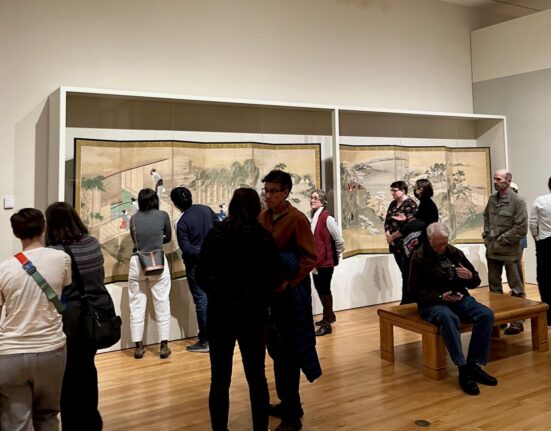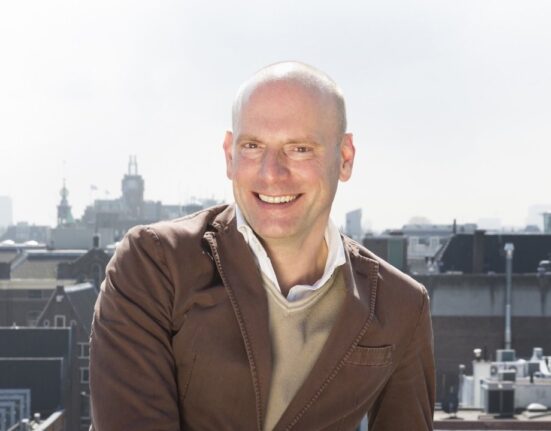MAASTRICHT, the Netherlands — Works made within the past 100 years are dominating the art market.
Contemporary and modern pieces accounted for 73 percent of the value of all fine art auction sales in 2017, according to the second annual Art Basel and UBS Global Art Market Report, which was published Tuesday. European old masters generated just 7 percent of last year’s sales, even factoring in Leonardo da Vinci’s $450.3 million “Salvator Mundi.” The report said that Leonardo price “should be considered an outlier variable.”
European old master pictures, and the works of art and decorative objects associated with them, were once the most prestigious status symbols that money could buy, but they are no longer the height of collecting fashion. Dealers specializing in these objects now look to sell their best pieces either to museums or to a relatively small pool of wealthy connoisseurs.
The European Fine Art Fair in Maastricht, whose 31st edition opened March 8, is the one event in the art world calendar where specialist dealers show a critical mass of museum-worthy art of the past. Last year’s event attracted more than 71,000 visitors over 10 days.
“There are so many dealers in one place. In terms of the decorative arts, there’s nothing comparable,” said Gloria Groom, chairwoman of European painting and sculpture at the Art Institute of Chicago. She said she was one of six members of the museum’s staff visiting the fair, which this year featured 275 exhibitors.
Such is the quantity and quality of the pieces on show in Maastricht that curators — and, equally important, groups of private patrons — from institutions such as the Art Institute of Chicago; the Metropolitan Museum of Art in New York; the Museum of Fine Arts, Boston; and the J. Paul Getty Museum in Los Angeles make the pilgrimage from the United States every year.
But this year, the Rijksmuseum in Amsterdam beat the Americans to a star museum piece. The London dealer Benjamin Proust was offering on consignment the original wax model for “The Genius of the Medici,” a bronze fountain sculpture now in the Palazzo Pitti in Florence, Italy. Dating from the 1550s, the statue, showing a young boy seated on a pedestal and raising an orb, was identified as a work by the Florentine sculptor Bartolomeo Ammannati. The wax model, owned by a private European collector, was included in an exhibition on Ammannati at the Bargello museum in Florence in 2011.
Frits Scholten, senior curator of sculpture at the Rijksmuseum, spotted the sculpture. He was given first refusal at a museum discount price of 700,000 euros, or about $866,000, and fast-tracked the Dutch institution’s purchase, according to Mr. Proust.
Mr. Proust said he had deliberately avoided marketing his star piece before the fair opened. “Everyone should be surprised,” he said. “If I send out stuff before the fair, why should they come?”
Who does and doesn’t come to Tefaf is an ongoing concern for its exhibitors and organizers. In an attempt to widen the fair’s international appeal — and to reach out to American collectors reluctant to travel to Europe after the terrorist attacks in Paris and Brussels — Tefaf collaborated with the art investment advisory firm Artvest Partners to start fall and spring fairs in New York in November 2016 and May 2017.
Under the aegis of Christophe van de Weghe, the new chairman of the fair’s Modern section, Tefaf’s spring edition, scheduled for May 4-8, will feature powerhouse galleries who currently do not exhibit in Maastricht — including Gagosian, Hauser & Wirth and David Zwirner.
But has this diluted the appeal of the mother fair in the Netherlands?
“There could be a handful of people who won’t come to Maastricht because of Tefaf New York. But it will increase awareness of the brand,” said Howard Shaw, president and director of Hammer Galleries, a New York dealership that exhibits at both Tefaf Maastricht and New York Spring. “I can’t tell you how many of my clients haven’t heard of this fair.”
In Maastricht, Mr. Shaw sold the small but vibrant Vincent van Gogh canvas “Lilacs,” painted in Paris in 1887, priced at $9.5 million. It had been owned by the foundation of the gallery’s creator, Armand Hammer, since 1971.
Though the arrival of leading international galleries such Perrotin, Massimo de Carlo and Mazzoleni gave an extra edge of quality to Tefaf Maastricht’s Modern section, most of the truly exceptional objects and sales remained concentrated in the booths devoted to older artworks.
“There’s a freshness about the fair this year,” said Ms. Groom of the Chicago Institute of Art. “There are more revelations.”
The top-of-the-range Paris dealers Kugel Gallery sold an opulent ivory and silver gilt astronomical clock, made in the 1630s by the Augsburg goldsmiths David I. Schwestermuller and Daniel Zech. The price of the so-called Bulgari Clock was a closely guarded secret. Also kept quiet was the price of a newly discovered half-length canvas of St. Stephen from the 1640s by the Neapolitan baroque painter Bernardo Cavallino, which sold before the fair opened by the Rome dealership Giacometti Old Master Paintings. Retaining its original frame, and fresh from a private Italian collection, this was regarded by many as the outstanding old master of the fair. It was bought by an American private collector.
Among the confirmed sales, the London dealers Agnews found a private European buyer for “The Serenade, or The Ambulant Musicians,” a multi-figure composition by Jacob Jordaens that was once owned by Empress Joséphine, Napoleon’s first wife.
Painted around 1640-5, this was another recent rediscovery and was priced at $5 million. It was first offered, however, at Tefaf New York last fall.
Tefaf has signed up for a further 10 years in Maastricht. The agreement has followed assurances from the local authorities that the fair’s tired 1980s venue, the MECC Maastricht, will be revamped, luxury hotel rooms created and travel links improved.
But will demand for the fair’s traditional “destination” strength of old master art and objects be set for an upgrade, too — particularly if collectors tire of today’s increasingly formulaic contemporary market?
Clare McAndrew, who from 2008 to 2016 wrote much-referenced art market reports for Tefaf and now does it for Art Basel and UBS, is not so sure.
“Old masters could become more popular again, but it’s doubtful if it could swing back in a big way,” Ms. McAndrew said. “The supply is so thin.”
Unlike today’s counterparts, Ammannati and Cavallino didn’t make art in editions of six.







